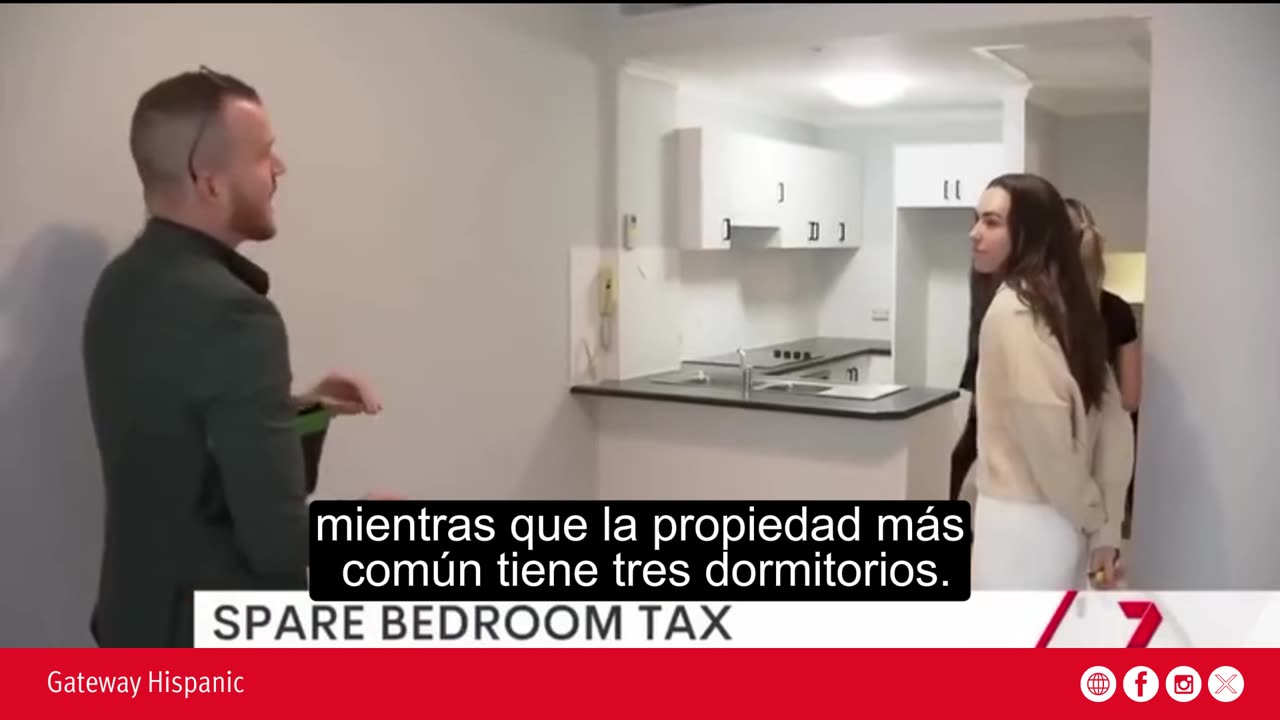Premium Only Content

Australia Considers Tax on Empty Rooms to Encourage Efficient Use of Housing
A recent study has revealed a significant mismatch between the average household size and the size of available homes in the country. According to the research, one-third of Australian households consist of only two people, while the most common property remains a three-bedroom home. This discrepancy has led public policy and urban planning experts to propose innovative measures to optimize the use of existing housing.
Proposal for a Tax on Vacant Rooms
Among the alternatives under discussion, the possibility of implementing a tax on vacant rooms stands out. The main idea is to incentivize downsizing among smaller families and empty nesters, encouraging them to move into smaller homes. This type of levy would act as an economic incentive to free up currently underutilized space, increasing the available housing supply and potentially helping to moderate prices amid growing demand.
Stamp Duty Removal as a Complementary Measure
To balance the proposal, experts suggest pairing this tax with the removal of stamp duty, which would reduce the cost of acquiring a new home better suited to household size. The combination of these measures aims to create an environment where residential decisions align with market efficiency and optimal use of housing stock, avoiding wasted space and promoting a more dynamic market.
Challenges of the Mismatch Between Homes and Households
The study highlights that the problem is not only the quantity of properties but also their distribution and size. While three-bedroom homes remain the most common, many of these houses are occupied by only two people, creating vacant rooms that represent an underutilized resource. This mismatch contributes to pressure on rental and purchase prices, as the effective supply of homes suitable for actual household sizes is more limited than general statistics suggest.
Potential Impact on Society and the Economy
Implementing a tax on empty rooms could have significant implications. On one hand, it would encourage family mobility and allow larger homes to be redistributed more efficiently, benefiting those seeking properties that fit their household size. On the other hand, removing stamp duty could stimulate the purchase of new homes, energizing the housing market and generating indirect economic benefits for construction and related services.
Conclusion: A Step Toward a More Efficient Housing Market
The debate in Australia over taxes on empty rooms and the removal of stamp duty underscores the need for policies that respond to demographic and structural changes in households. Evidence shows that without intelligent interventions, the mismatch between home sizes and household sizes will continue to put pressure on supply and prices. With well-designed incentives, it is possible to achieve a more balanced, efficient housing market tailored to the real needs of Australian citizens, promoting mobility, access, and responsible use of residential space.
-
 9:38
9:38
Millionaire Mentor
17 hours agoBernie Sanders LOSES IT After Scott Bessent’s Shocking Comeback
3.55K6 -
 1:35:35
1:35:35
Dialogue works
1 day ago $0.54 earnedLarry C. Johnson & Paul Craig Roberts: Trump’s Plan COLLAPSES as Russia Strikes — Xi & Modi Rise!
2.87K3 -
 14:09
14:09
Zoufry
2 days agoThe Hunt for The Biggest Art Thief in US History
6.98K3 -
 29:23
29:23
DeVory Darkins
1 day ago $14.76 earnedTrump makes BOMBSHELL Announcement as Democrat Judge issues SHOCKING Order
26.4K174 -
 28:31
28:31
James Klüg
1 day agoDemocrats Are FURIOUS With Trump’s Immigration Policy But Know Nothing About It | Part 2
18.9K20 -
 13:55
13:55
itsSeanDaniel
2 days agoWOKE Nutjob Liberal Finally Proved JUST HOW DUMB She Really is
8.11K9 -
 15:04
15:04
GritsGG
15 hours agoHow the Rank 1 Player Warms Up on Warzone Before Stream!
9.94K -
 1:54:43
1:54:43
Side Scrollers Podcast
19 hours agoVoice Actor ROASTED For Racist Double Standard + Influencer FELONY After Con Threat | Side Scrollers
34.2K7 -
 11:03
11:03
The Pascal Show
19 hours ago $1.26 earned'THAT BABY IS GONE!' Neighbors Break Silence On Emmanuel Haro Case... Wildlife Took Remains?!
10.6K -
 LIVE
LIVE
Lofi Girl
2 years agoSynthwave Radio 🌌 - beats to chill/game to
367 watching